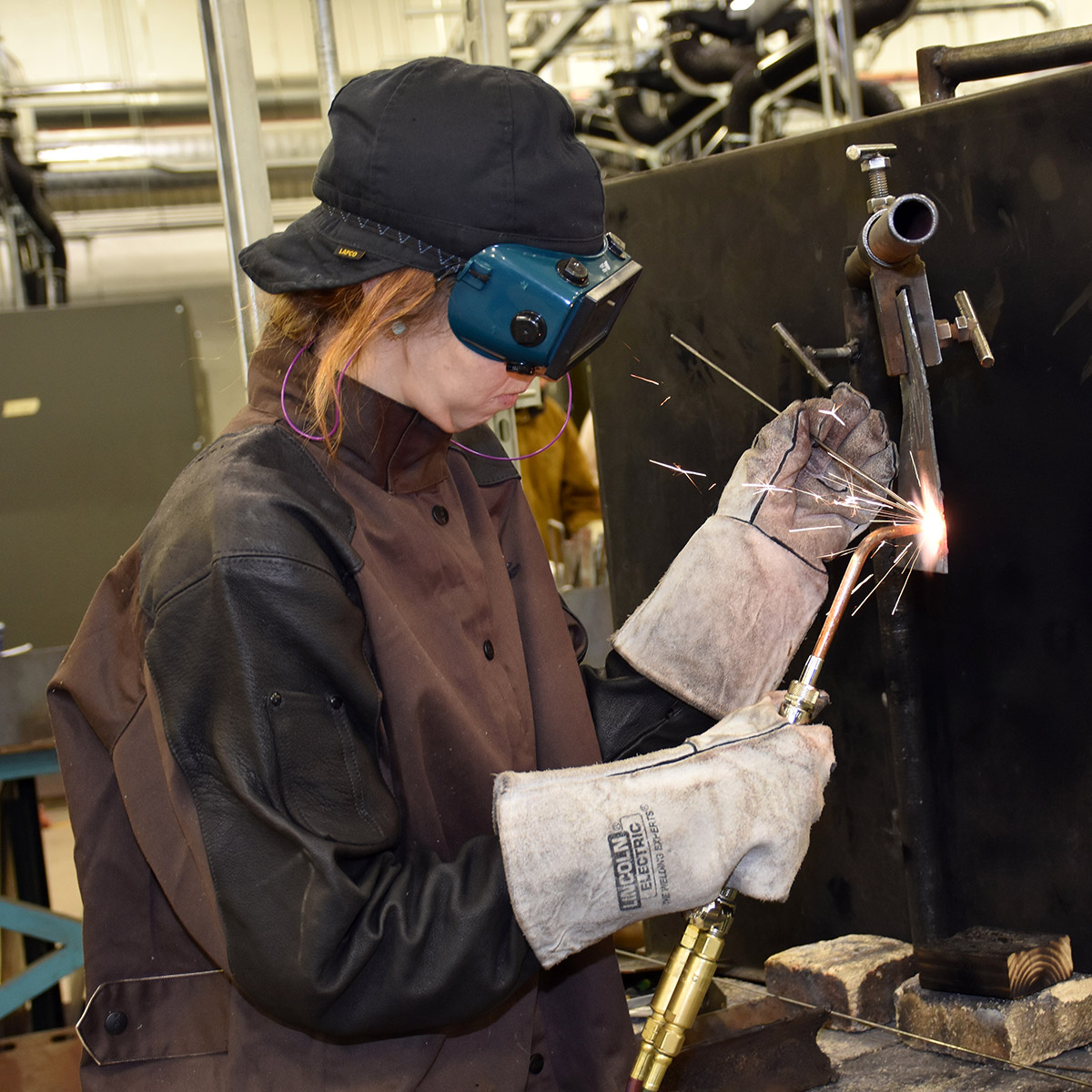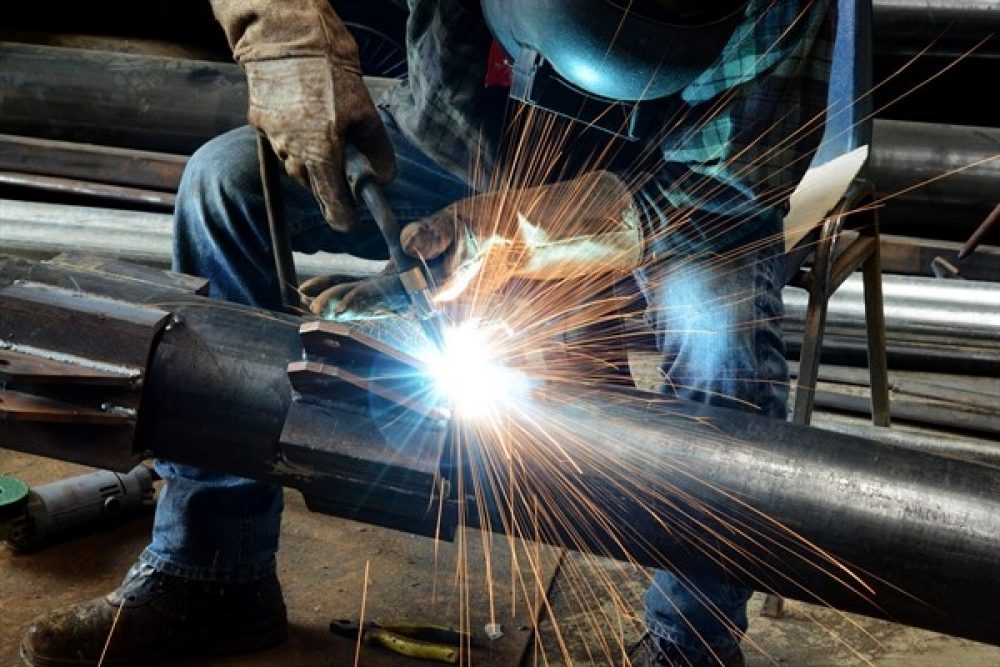Common Welding Repair Service Issues and Just How to Address Them Properly
Welding repairs commonly run into a variety of issues that can jeopardize the stability of the end product. Usual issues include inadequate penetration, porosity, and misalignment, to name a few. Each problem offers unique difficulties that need specific methods for resolution. Comprehending these concerns is vital for welders intending to improve their results and skills. This discussion will discover these typical welding repair concerns and efficient methods to address them.
Poor Infiltration
Insufficient infiltration happens when the weld metal falls short to completely fuse with the base product, leading to weak joints and prospective structural failings. This concern commonly originates from not enough warm input, incorrect electrode angle, or improper welding rate. Welders may encounter inadequate penetration because of a mistake of the necessary criteria for a details product thickness or type. Additionally, contamination on the base product's surface can prevent efficient bonding, intensifying the trouble. To deal with insufficient infiltration, welders should ensure appropriate setups on their tools and keep a clean work surface area. Regular inspection of welds is advised to determine any deficiencies early, permitting timely corrections and the prevention of endangered structural honesty in welded assemblies.
Porosity
Porosity is a common defect in welded joints that manifests as tiny gas bubbles trapped within the weld metal. This issue can jeopardize the honesty of the weld, resulting in decreased stamina and potential failing under stress. Montana Mobile Welding and Repair. Porosity typically occurs from contamination, wetness, or inappropriate welding strategies, which enable gases to run away right into the liquified weld pool. To attend to porosity, welders need to assure proper surface preparation, keep a clean working setting, and make use of suitable welding specifications. Furthermore, picking the best filler material and securing gas can mitigate gas entrapment. Routine examination and testing of welds can assist determine porosity early, guaranteeing prompt corrective activities are taken, consequently maintaining the top quality and integrity of the welded structure
Imbalance
Misalignment in welding can develop from different aspects, consisting of incorrect setup and thermal growth. Comprehending the source is crucial for reliable resolution. Numerous improvement methods are readily available to realign components and guarantee architectural integrity.
Reasons for Imbalance
Welding misalignment usually stems from a range of underlying issues that can endanger structural honesty. One main reason is incorrect fit-up of components before welding, which can cause spaces and uneven surface areas. Variants in thermal expansion during the welding process can also lead to distortion, specifically if the materials being signed up with have various coefficients of growth. Additionally, poor clamping and fixturing might stop working to hold parts securely in area, leading to activity during welding. Poorly conserved devices, consisting of welding machines and devices, might present disparities in the weld grain, additional contributing to misalignment. Ultimately, driver error, originating from not enough training or experience, can likewise play a considerable function in developing misaligned welds.
Correction Techniques Available
Addressing imbalance properly needs a combination of rehabilitative methods tailored to the certain problems at hand. One usual technique is the usage of fixtures or jigs to hold elements in the appropriate setting throughout welding, guaranteeing constant positioning. In addition, pre-heating the products can help in reducing distortion and improve fit-up. For significant imbalance, mechanical adjustment techniques, such as making use of hydraulic jacks or clamps, can be used to remedy the setting prior to welding. Post-weld warmth treatment might likewise be needed to eliminate stresses triggered by misalignment. Cautious examination and modification during the setup stage can stop misalignment concerns from becoming substantial troubles, advertising a smoother welding process and enhancing overall architectural honesty.
Distortion
Distortion is a typical difficulty in welding that can arise from numerous elements, including uneven cooling and heating. Comprehending the reasons for distortion is vital for implementing effective prevention strategies. Addressing this problem not only enhances structural integrity but likewise enhances the general top quality of the weld.
Reasons for Distortion
When based on the intense heat of welding, products typically undergo adjustments that can cause distortion. This sensation largely emerges from thermal development and tightening during the welding procedure. As the weld area warms up, the material expands; upon cooling, it gets, which can develop interior stresses. On top of that, unequal heating throughout a work surface can aggravate these tensions, causing warping or flexing. The kind of product likewise plays a substantial role; steels with differing thermal conductivity and coefficients of development might react differently, bring about unpredictable distortions. Poor joint design and insufficient fixturing can add to imbalance throughout welding, increasing the possibility of distortion. Recognizing these reasons is important for effective welding repair and prevention approaches.
Avoidance Techniques
Reliable avoidance techniques for distortion throughout welding focus on managing warm input and ensuring correct joint style. Keeping a constant heat input assists to reduce thermal growth and tightening, which can result in distortion. Utilizing techniques such as pre-heating the work surface can likewise lower the temperature slope, advertising uniform heating. In addition, selecting appropriate joint designs, such as T-joints or lap useful content joints, can improve security and minimize stress and anxiety focus. Applying appropriate fixturing to safeguard the work surfaces in position additionally aids in maintaining placement throughout the welding procedure. Staggered welding sequences can distribute warm much more equally, avoiding localized distortion. By applying these approaches, welders can substantially lower the chance of distortion and enhance the total top quality of their welds.
Splitting
Breaking is a typical problem encountered in welding repairs, typically resulting from numerous elements such as incorrect cooling rates, product choice, or insufficient joint prep work. The occurrence of cracks can substantially jeopardize the stability of the weld, leading to potential failures during procedure. To address this concern, welders must first evaluate the source, making certain that products are suitable and suitably selected for the details application. Additionally, controlling the air conditioning price throughout the welding procedure is necessary; fast cooling can generate tension and result in splitting. Correct joint style and prep work likewise add to lessening the threat. Carrying out these approaches can improve weld quality and sturdiness, inevitably minimizing the possibility of fracturing in ended up weldments.

Insufficient Blend
A significant issue in welding fixings is insufficient combination, which takes place when the weld metal does not appropriately bond with the base product or previous weld passes - Montana Mobile Welding and Repair Belgrade Welding. This defect can cause weaknesses in the joint, possibly endangering the integrity of the welded structure. Variables adding to incomplete fusion include not enough heat input, incorrect welding method, and contamination of the surface areas being joined. To address this issue effectively, welders ought to assure correct pre-weld cleaning and surface area preparation, in addition to readjust their welding parameters to accomplish sufficient penetration and blend. Regular evaluation throughout the welding procedure can also help recognize incomplete combination early, enabling timely rehabilitative actions to boost the general quality of the weld
Overheating
While welding repair services can boost architectural integrity, overheating provides a significant difficulty that can lead to material degradation. Excessive heat during welding can change the mechanical properties of steels, leading to minimized toughness, enhanced brittleness, and bending. This phenomenon is specifically essential in high-stress applications where architectural dependability is extremely important. Identifying getting too hot can include visual evaluations for discoloration or distortion, in addition to monitoring temperature throughout the welding procedure. To mitigate the threats connected with overheating, welders should employ appropriate techniques, such as controlling warmth input, adjusting traveling rate, and making use of appropriate a knockout post filler products. In addition, applying pre- and post-weld warm therapies can help bring back material buildings and enhance the total high quality of the repair service, guaranteeing lasting performance and safety and security.
Frequently Asked Questions
What Are the Usual Indications of a Welding Defect?

Exactly How Can I Examine My Welds for High quality?
To evaluate welds for quality, one can utilize aesthetic assessments, ultrasonic testing, and radiographic approaches. Each strategy ensures structural integrity, identifies defects, and confirms adherence to defined requirements, ultimately improving the dependability of the welded joints.
What Security Precautions Should I Take While Welding?
When welding, one need to focus on security by wearing ideal individual protective equipment, making certain appropriate ventilation, securing combustible products away, maintaining a clean work space, and being mindful of surroundings to avoid injuries and mishaps.
Can I Repair a Weld Without Remodeling the Entire Joint?
Fixing a weld without remodeling the entire joint is possible, relying on the damage (Montana Mobile next Welding and Repair Belgrade Fabrication). Techniques such as grinding, including filler product, or making use of a welding procedure can properly deal with details defects while maintaining the surrounding structure
What Devices Are Essential for Efficient Welding Repair Works?
Crucial tools for reliable welding repair work consist of a welding device, cable brush, mill, safety gear, clamps, and filler materials. Each tool plays an essential function in ensuring high quality and security throughout the repair procedure. Porosity normally occurs from contamination, wetness, or inappropriate welding techniques, which enable gases to leave into the liquified weld swimming pool. Inadequately kept devices, consisting of welding equipments and devices, may introduce variances in the weld bead, additional contributing to misalignment. When subjected to the extreme warmth of welding, materials often undertake adjustments that can lead to distortion. Splitting is an usual issue come across in welding fixings, frequently resulting from different aspects such as inappropriate air conditioning prices, product selection, or insufficient joint prep work. A substantial concern in welding repairs is incomplete fusion, which takes place when the weld metal does not sufficiently bond with the base product or previous weld passes.